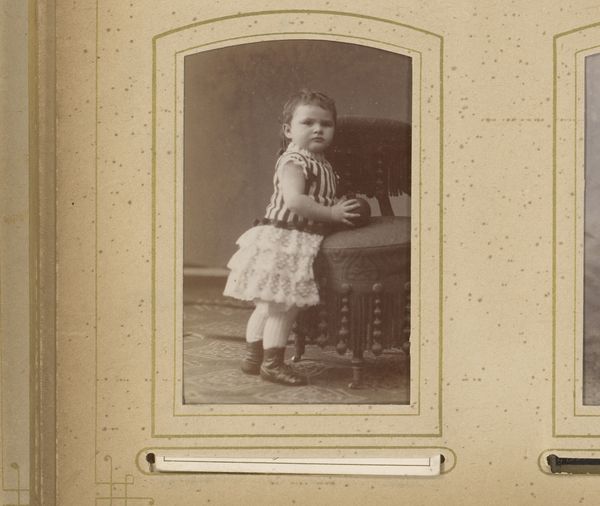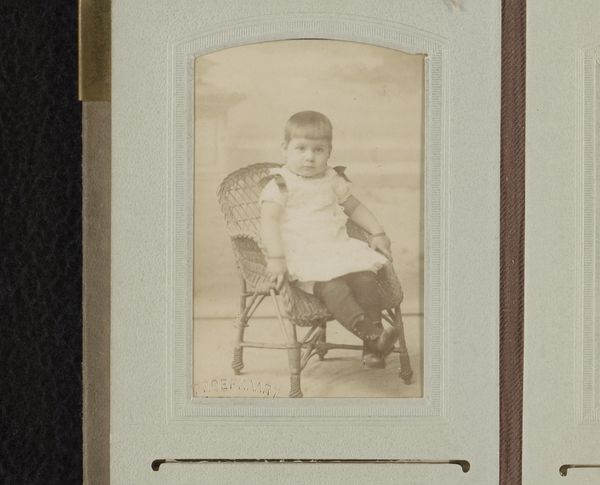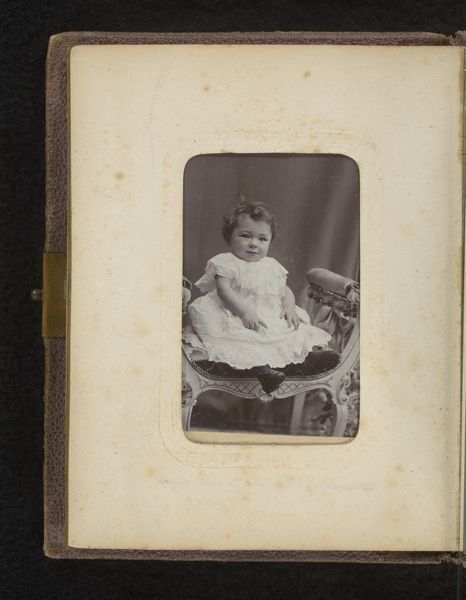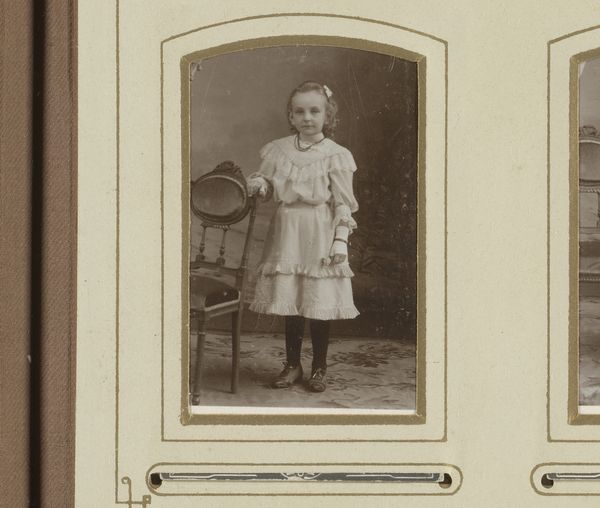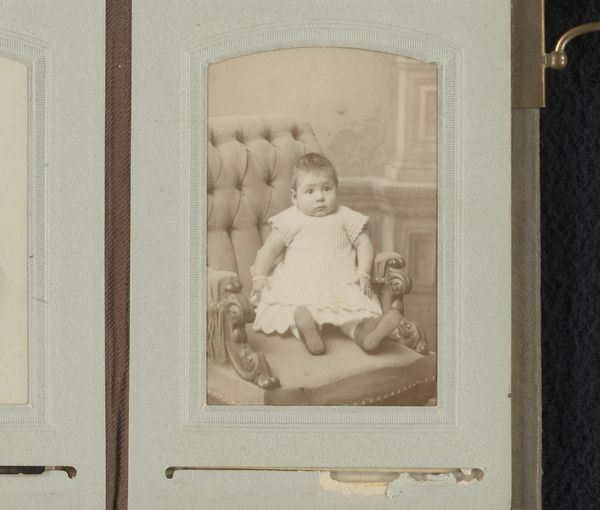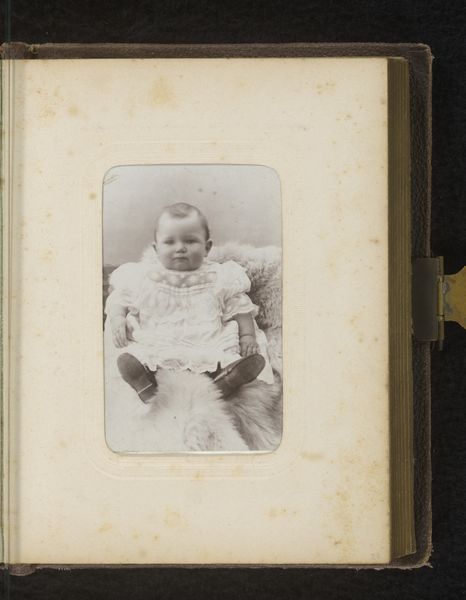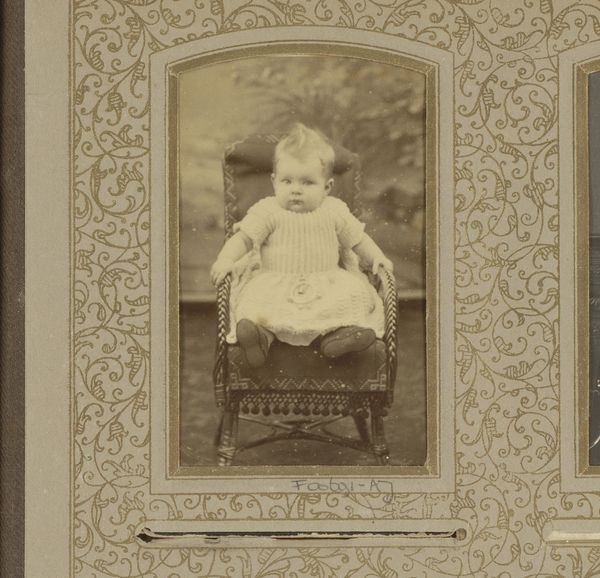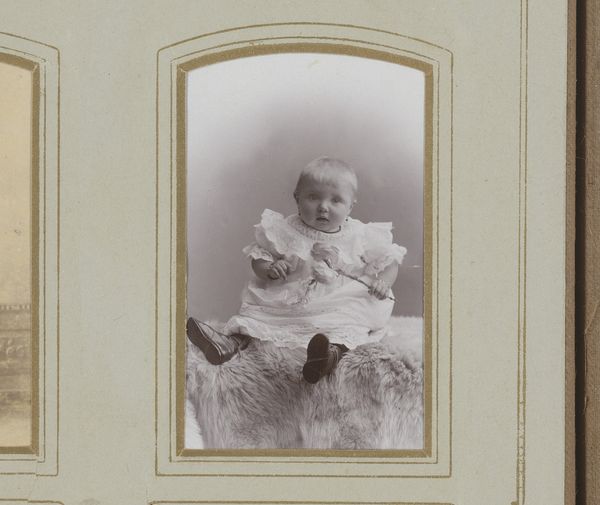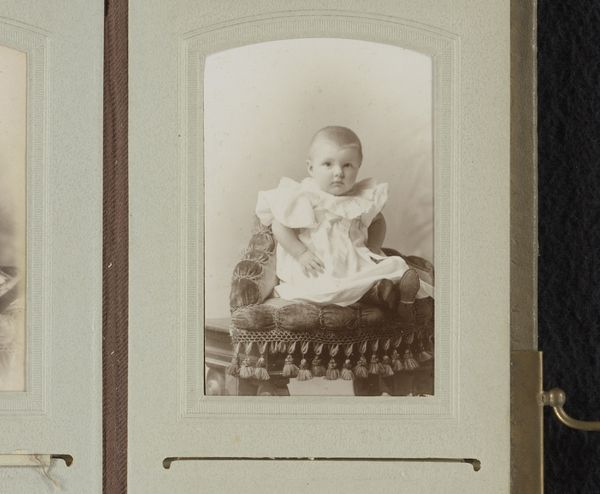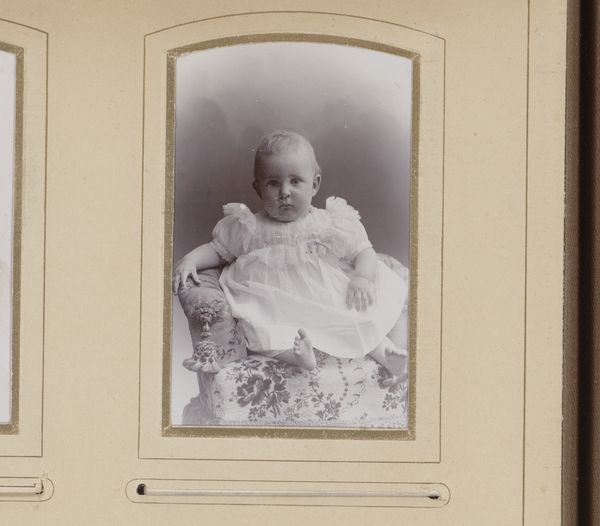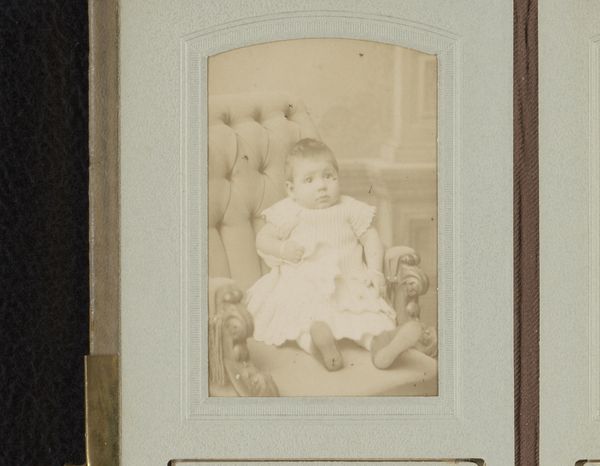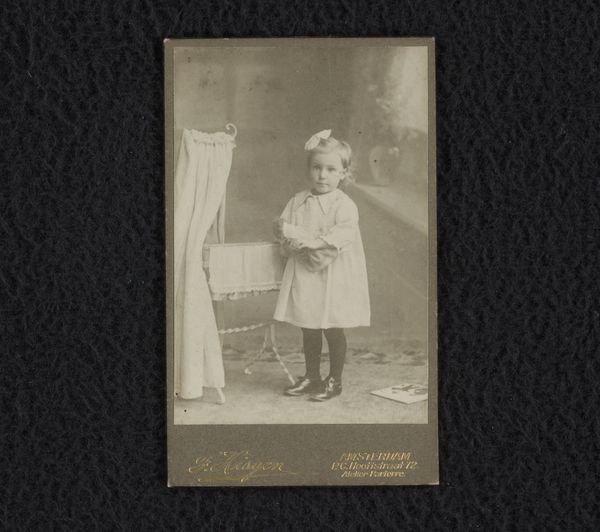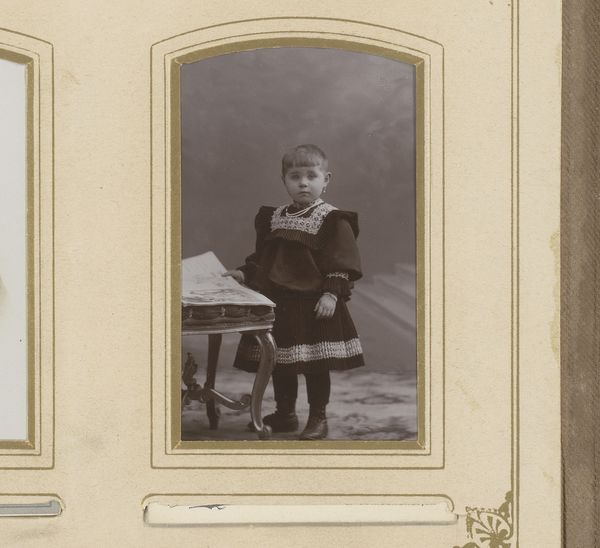
photography
#
portrait
#
photography
#
watercolor
#
realism
Dimensions: height 84 mm, width 54 mm
Copyright: Rijks Museum: Open Domain
Curator: Here we have a captivating early photograph, "Portret van een meisje," which translates to "Portrait of a Girl." The work is attributed to Albert Greiner and thought to have been created between 1890 and 1910. Editor: My immediate impression is one of serene simplicity. The monochrome palette contributes to the sense of quietude and timelessness. The composition, with the young girl positioned centrally, exudes a certain formal innocence. Curator: Absolutely. As a photographic portrait, we must consider the historical context. The late 19th and early 20th centuries saw portraiture becoming more accessible to the middle classes. The rise of photography democratized image-making, allowing families to document their lives and social standing more readily. Editor: Indeed, yet the composition speaks volumes. Observe the subtle use of light and shadow across her face and dress. The layering in her attire introduces intriguing visual rhythms, which harmonize elegantly with the organic, geometric structure of the wood chair situated just behind the child. There is also tension, as one can’t decide if the backdrop is a building in reality, or a drawn piece for studio portraits. Curator: And what of the background? The somewhat vague exterior seems to suggest something of her milieu. It is very controlled; almost a proscenium on which she appears as a symbol of budding innocence. Such controlled images were clearly designed to transmit certain social messages about childhood at the time. Editor: Precisely! As such, we also have to consider the artist’s deliberate choice to include what seem like mundane, unadorned objects surrounding her. They seem very functionalist, perhaps indicating something of the economic status that frames her social placement and even her own identity as being almost as raw material to social sculpting. Curator: A salient observation. One takeaway is the deliberate construction of childhood that this photograph signifies. Photography itself as a medium participates directly in such fabrication. Editor: The work evokes a delicate dialogue. It forces us to analyze both form and its deeper underpinnings to see that art, like history, frames and defines cultural memory.
Comments
No comments
Be the first to comment and join the conversation on the ultimate creative platform.
